The sacral sound of an organ has been pleasing people’s ears since 285 BC. One can only imagine the craftsmanship behind it and how difficult it should be to rebuild and refurbish this relatively ancient instrument, but that is exactly what Raphaël Mouneyres, from Audiotronic company in France, does. Not to mention he is a mastermind behind Organnery, an embedded system for pipe organ sound engine, as well. So if you ever were curious to learn more about these unique instruments, we invite you to delve deeper into the story of Raphaël.
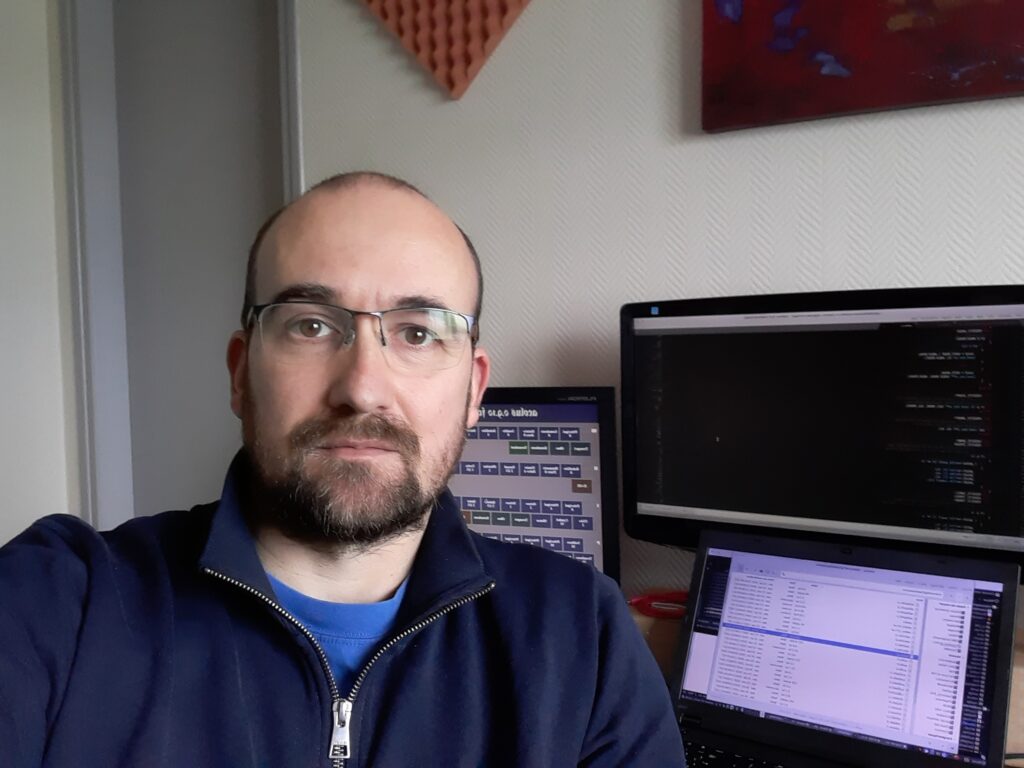
Let’s talk about your relationship with music. When and how did it start? Is Organnery your first project? If not, please share your other works with us!
This could be a very long story, so let’s focus on the main events. I discovered music creation at the age of 12 in 1990, with an incredible keyboard (Realistic Concertmate-650) and never stopped since. MIDI was already there and sequencers running on Atari were incredible.
So electronic keyboard music was my first big adventure (Vangelis, JeanMichal Jarre..), then learned to play electric guitar and played gigs with my brother in a metal band (Ahmasiah) for years while developing knowledge on all audio software coming out years after years. It was a very creative era with computers being more powerful every month.
After graduating from high school and working for a few years in the internet industry, I created MAWZER modular MIDI controller back in 2008, one of the first of its kind to be available on the market. It has been an incredible adventure with a lot of positive user feedback. The project ended as we couldn’t raise enough funds to continue after the first batch of 200 units sold. I’m happy to talk with a customer who still owns and uses this controller in their daily music task, today in 2021, still working more than 10 years after it was created!
The future will most probably bring more projects on the market, stay tuned!
An organ is not a very usual instrument. When and how did it come into your life?
I’m running a musical instrument electronic repair company in Bordeaux, and we have clients asking for repair on electronic organs, used in homes or houses of worship and churches.
It was totally unexpected. We worked mainly on digital pianos, analog synthesizers, guitar and bass amplifiers. Digital organs are now part of our work because people asked for it, and there are very few repair companies to do the job.
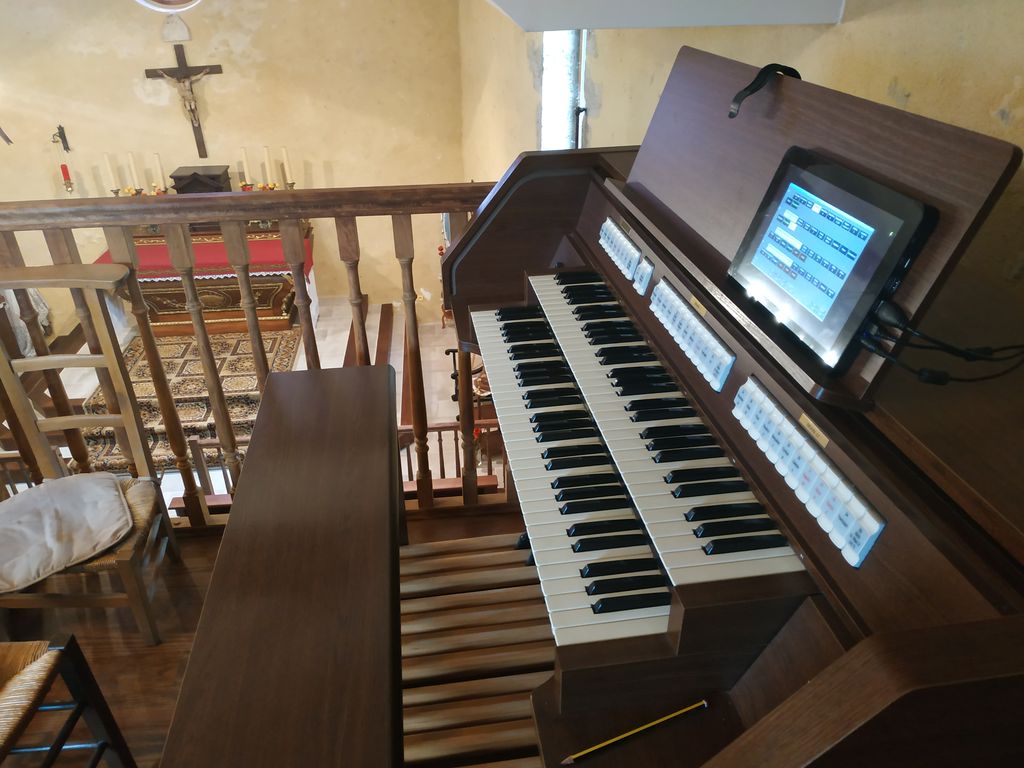
Could you tell us a little bit more about the whole process of rebuilding and refurbishing organs? How long does it take, and what are the challenges you face while doing that?
A typical organ conversion would take about 5 days of man’s work. First we check for parts that can be reused, and remove unusable parts (they will be recycled). Then the console is cleaned; keyboards, pedals, buttons fixed and repaired so they can work reliably in the next few years. If woodwork is necessary we’ll repair or rebuild some parts, and some controls may be added depending on customer request. From there we need to add electronics to “midify” the console.
Each instrument is different, and here’s a real challenge as organs from 1970 are not built the same way as modern ones. We need to have electronics able to convert any kind of connector or button style to our sound engine. So there is a lot of cabling inside the instrument. When this is done, we add Organnery sound engine in the console, new amps and speakers if necessary, and the process of configuration and voicing begins until we have a good sounding instrument.
Finally if the instrument is to be voiced on customer location, we’ll travel there with the instrument. The organist is the final judge on voicing the organ to its liking.
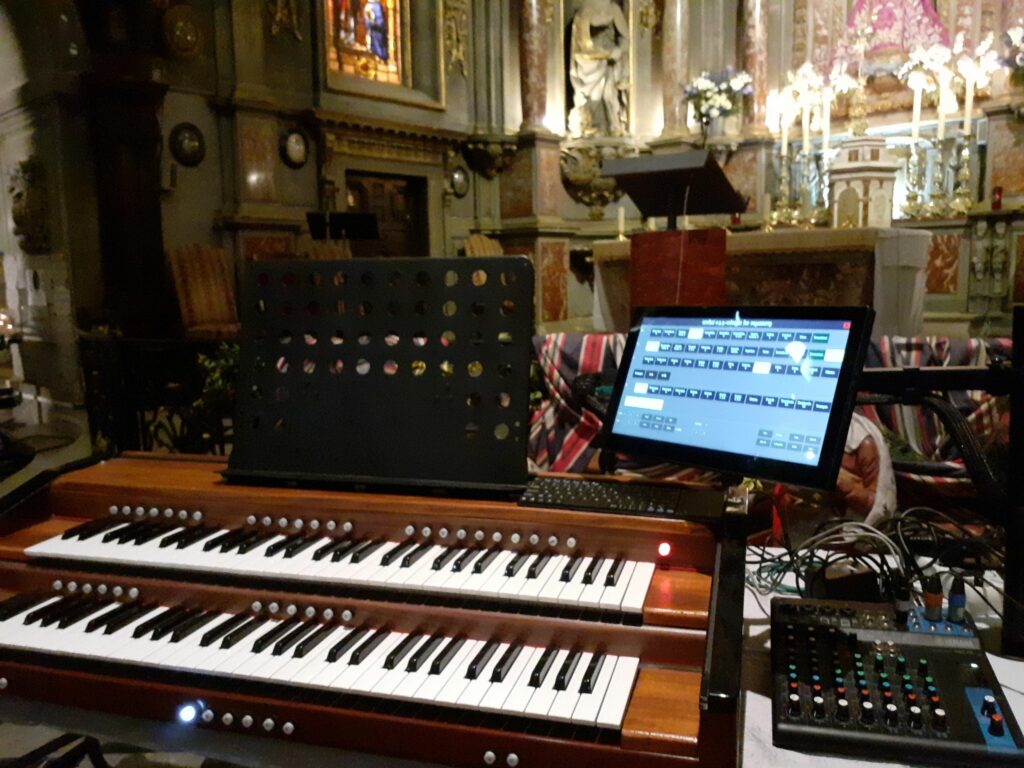
What makes an organ such a unique instrument, and how can it become a contemporary device?
Pipe organs, with real pipe, are MASSIVE, HUGE, and a real piece of ART and craftsmanship. If you look at how complicated the mechanics are, you have to say a very big BRAVO to its inventors, and we talk about the Antiquity or Medieval times!
Starting in the 60’s electronic organ appeared on the market, offering a lower cost solution for many places where building a real pipe organ was not possible.
Organs are everywhere today, some small ones, some incredibly large ones, and there are modern composers for classic organ music up to weird modern music.
For organ history, take a look at this article.
Could you please share with us why and how you came up with the idea to digitalize organs?
While most electronic pipe organs I’ve been asked to repair were repaired, I faced some units where humidity and other environmental elements would make the unit very hard if not impossible to repair at a reasonable cost. Sometimes critical components are simply impossible to find for organs more than 30 years old.
But most of the time the console itself (woodwork, keyboards, buttons) are still looking good, only the electronics are out of date. From an environmental and economical point of view, it would not make sense to throw this instrument in the trash and buy a new one.
So I looked at what was existing today and found a solution without reinventing the wheel. It took about a year to have a stable solution, and the process of improving it is still on the way.
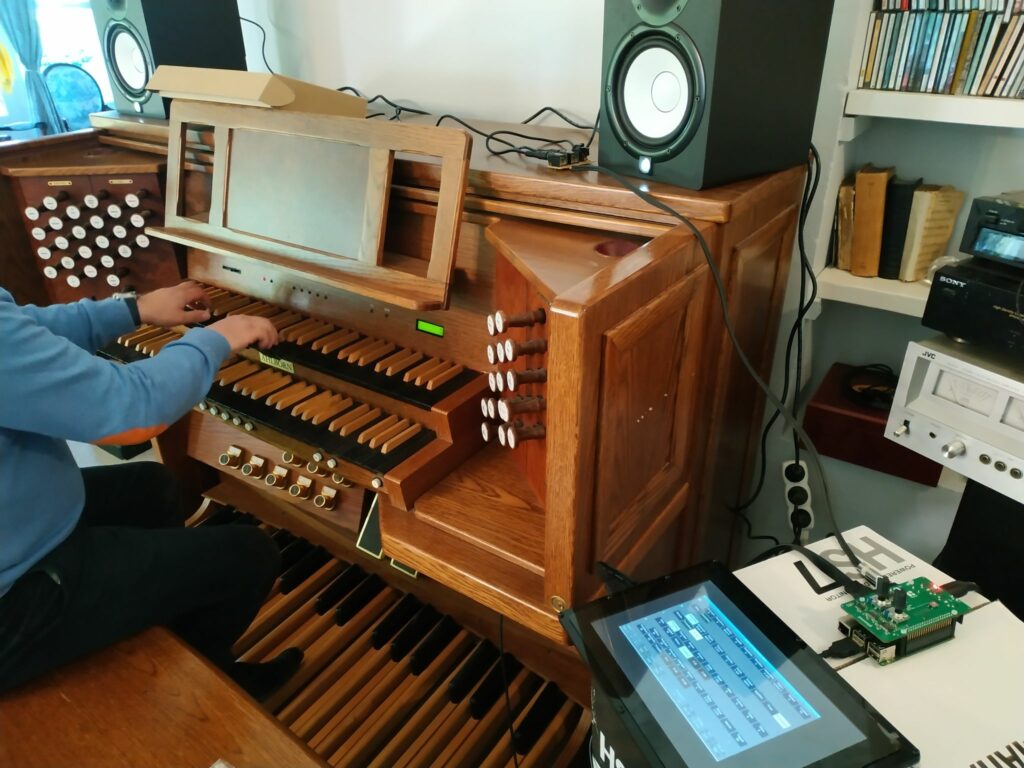
How would you describe the sound of a digital organ compared to the traditional one? In general, what do you love about the sound of organs?
I would not try to compare them as this can be a complicated subject.
Anyway the goal of using Aeolus as a sound engine is not to make a perfect imitation of a real pipe organ sound, but to be close enough to create a pleasant sound that musicians can enjoy and play.
We are working with expert organ voicers to create the pipe sounds, and the result has been better than expected! The sound and ambience created with proper voicing can be absolutely well balanced and create magic.
Please introduce our readers to the Organnery software. What is it, and how does it work? Why should other musicians who play organs consider trying it out?
Organnery is a dedicated customized Linux image running optimized pipe organ software called Aeolus on a Raspberry Pi.
Aeolus software is open source, and we decided to use it because it is perfect to create a custom organ, sculpt the sound exactly as you need. No other organ solution can do it.
Aeolus is totally flexible: You decide how many keyboards you want, then choose your stops (pipe sounds), voice them the way you want to create a unique instrument. If you don’t know how to do it, we have people doing it for you, either for home practice or voiced inside a church so it is perfect for the room acoustics.
Organists can have a “replica” of an existing organ, even if no sample library has been done. Aeolus is based on pure additive synthesis optimized for pipe organ sound, not on samples!
Organnery can also be used as an expander to add more stops sound to an existing organ, you only need a MIDI output. 😉
Custom voicing is the strength of Organnery solution, you are not bound to an existing organ definition, you are free to imagine and create the organ you want.
Why did you choose the Raspberry Pi & Pisound combo for your project? Why is it important for Organnery, and which features do you like and use the most?
Organists are all around the world, and so is the Raspberry Pi.
We aim at providing a software solution people can try and use by themselves. So access to well known, well documented electronic hardware was important. The community behind Raspberry Pi is huge and we hope it can help a lot of musicians discover this incredible instrument even without Linux knowledge.
Pisound board has been chosen as the default option for audio and MIDI on the Raspberry. It has proven to be absolutely stable and trouble-free during prototyping as well as in the production environment in the organs. We really recommend it! We like the combo audio+MIDI in a single board, it really helps having a quick and easy solution without extra cabling.
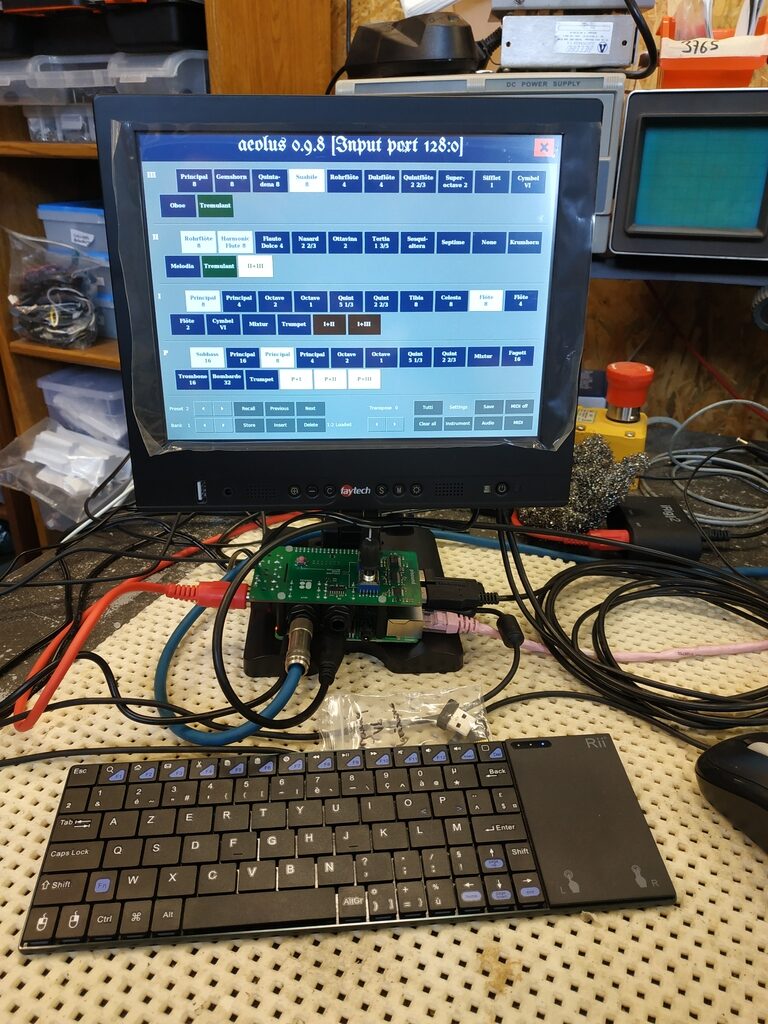
Could you please share your future plans with us? Maybe some exciting projects or ideas are coming our way?
As said previously, Aeolus has proven to be a very good sounding pipe organ engine, and now we have works on the way to make it even better and accessible for a larger audience.
Several organ definitions have been created, we may soon have a large library of available stops to create any organ for any style.
We are also working on building a network of certified technicians so organ conversions can be done in various countries for people unable to do it by themselves. Any electronic technician interested can contact us to apply.
A freely downloadable version of Organnery is about to be released on our website. Burn a SD card, plug into a RPi3B+ and you’re ready to play! Subscribe to the newsletter to be notified.

Follow Organnery
Official websiteYouTube channel
Video presentation at Linux Audio Conference 2020
Open source code of Aeolus modified for Organnery